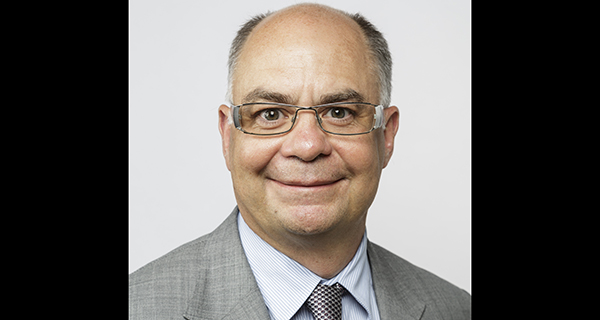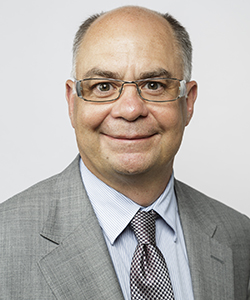Alfred Sorensen is CEO of Pieridae Energy.
What is Pieridae Energy and what does it do?
Sorensen: Pieridae Energy is Canada’s only fully-integrated LNG company. We are looking to build the US$8 billion, 10-million-tonne-per-year Goldboro LNG liquefaction facility off the East Coast near Halifax to supply much-needed natural gas to Europe.
In a nutshell, our company owns Alberta gas, is negotiating agreements to transport that gas through existing pipelines to Goldboro, where it would be liquefied and shipped to Germany to help that country ease its reliance on Russian gas and get off coal. The project would help revitalize a dormant drilling area in the Alberta foothills, potentially creating over 1,000 drilling jobs and supporting many more over the life of the LNG sales contract.
Goldboro has all its key permits: Canadian LNG export/import and Environmental Assessment approval; U.S. LNG and NAFTA export; and a Canadian permit to construct. It is also unique as Pieridae has signed a 20-year agreement with German utility company Uniper for five million tons per annum of natural gas, half of Goldboro’s capacity.
The German government is fully behind this project, having provided US$4.5 billion in potential loan guarantees to help build the liquefaction facilities and fund natural gas drilling in Alberta. This is the largest loan guarantee ever given by the German government.
Finally, we have signed a benefits agreement with the Mi’kmaq of Nova Scotia. The agreement means the Mi’kmaq will benefit economically from the development, construction and operation of the Goldboro LNG project.
What is the history of the company and how it came to be?
Sorensen: Pieridae Energy is the second go-around for the key management team of the company, focused on building a liquefied natural gas export project in Canada. Our first project was on the West Coast in the town of Kitimat. That project was sold in 2010.
In 2012, we decided we would try and do a project on the East Coast with the idea to find a customer first who would be the anchor tenant of the new LNG project. That was accomplished in late 2013 and from there we have begun our process of becoming an integrated LNG company by acquiring natural gas resources, primarily in Alberta to start. That gas will be used to supply our Goldboro LNG facility in Nova Scotia.
Tell me about the Goldboro LNG facility and what that will entail?
Sorensen: The Goldboro project would be the largest mega-project in Nova Scotia’s history, putting 3,500 men and women to work during construction, and creating 200 permanent jobs once the facility is up and running.
It would also help revitalize a dormant drilling area in the Alberta foothills, potentially creating over 1,000 drilling jobs and supporting many more over the life of the LNG sales contract. The plant will be built in Nova Scotia, 250 km northeast of Halifax near the small community of Goldboro, right at the mouth of the Maritimes Northeast Pipeline, which would supply the facility with natural gas. It would include two liquefaction facilities or ‘trains,’ each producing five million tonnes of LNG each year.
As I mentioned, production from the first train has been sold to German utility Uniper – a 20-year binding contract with a 10-year extension. Alberta will provide majority of the gas needed for Train 1. We would need 1.4 Bcf/d of natural gas to supply a two-train (two facility) project. The gas would be stored in two very large storage tanks – each 14 storeys tall and holding five Bcf, the expected size of the LNG carriers that would arrive at Goldboro.
Right now, we are working to finalize a contract with global engineering firm KBR to design and build the facility. We expect to start construction activities in late 2019 and ship first gas overseas to coincide with an expected global LNG shortfall in 2023-2024.
Can you describe what the LNG industry is like these days in Canada?
Sorensen: The global LNG industry is very much an oligopoly controlled mostly by the super majors. The majority of production worldwide is concentrated in four countries: Qatar, Nigeria, Australia and Malaysia. The United States is quickly becoming a force as well, and leading a certain amount of change in the industry.
As a result of how facilities have been contracted in the U.S., you have a growing amount of volume sold with shorter contracts and more transparent pricing. That is probably the single biggest change the market is undergoing right now, a move to more transparent price worldwide, a more convergent price. For example, if the price is $10 in the United Kingdom, then it’s also going to be $10 in Japan.
So where does Canada’s role in the LNG world fit?
Obviously, Canada has difficulty getting large projects through to the finish line. But there are projects making headway: LNG Canada and Chevron’s Kitimat project on the West Coast, and our project on the East Coast, dedicated to selling natural gas into Northwest Europe.
The Canadian LNG industry is still in its infancy. There needs to be one project that is starting to get built so that Canada begins to become part of the international marketplace.
Canada is well suited to sell gas both into northeast Asia and northwest Europe. Given our long history in the natural gas sector, this is a natural extension of what we do. And since the U.S. is no longer an export opportunity for Canadian natural gas, we need to have a new outlet and that new international outlet requires the use of LNG.
What are your plans for the company?
Sorensen: There are three key areas where we see our future. The first is aggregation of supply. We continue to consolidate our natural gas resources around our current positions in Western and Eastern Canada.
Second, when we look at a supply source for our second facility or train, there are offshore opportunities both in Nova Scotia and Newfoundland. That would bring stranded natural gas supplies to market.
Third, take advantage of the optionality the LNG terminal would provide us with over time. We are bringing gas from one of the lowest priced regions of the world to water, and on the way we pass by one of the highest-priced markets in the northeast United States. It’s that option that we are creating across North America that is ultimately going to be able to extract significant value.
– Mario Toneguzzi
The views, opinions and positions expressed by columnists and contributors are the author’s alone. They do not inherently or expressly reflect the views, opinions and/or positions of our publication.



